A look at prison life in Queensland’s Woodford Correctional Centre
A rare visit to the high-security Woodford Correctional Centre gives an insight into how prisoners live and how corrections officers manage them.
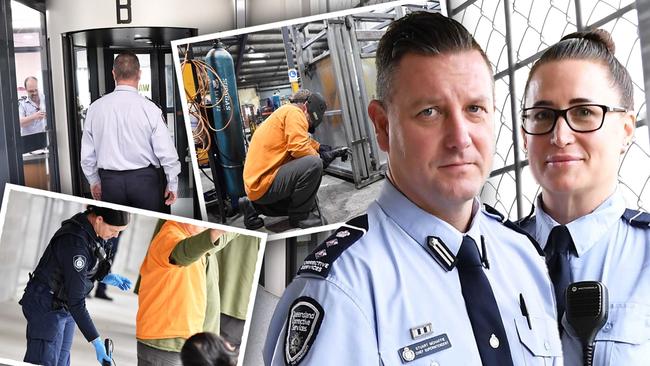
Sunshine Coast
Don't miss out on the headlines from Sunshine Coast. Followed categories will be added to My News.
The tones of ‘Happy Birthday’ carry down the corridor, as does the occasional laugh, breaking up the resigned stares and impassive faces.
A group of men lean against benches, reclining after a few hours spent building cattle crushes.
It could almost pass for an everyday industrial worksite. Until you look a little closer.
Steel-capped boots and helmets are stacked in shelves, unable to be taken outside the door.
Workshop doors are locked from the inside.
There’s a “red zone” where the men aren’t allowed to go.
This almost regular workplace is anything but.
It’s an outlet for some of the 1500 prisoners who call Woodford Correctional Centre home – the same place Brenden Abbott, better known as the infamous Postcard Bandit, once resided.
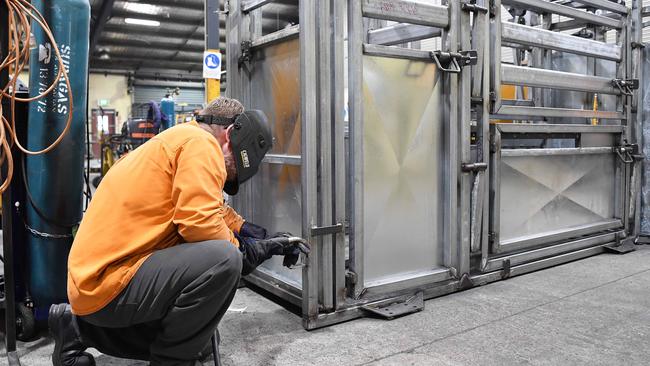
At the high-security prison, cattle crushes for a major dairy company are built by the inmates, prison-green shirts and tracksuits are made in the textiles workshop, wood is recycled and even metal industrial Chilli Bins are refurbished.
The workshops are pristine clean and corrections officer Joe, his last name withheld for privacy, said the prisoners learnt skills they could take with them when they were released.
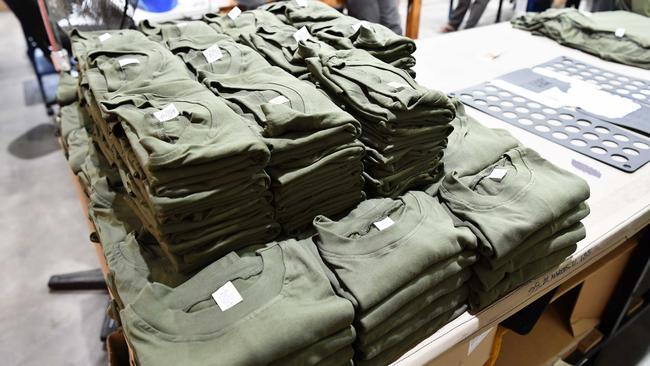
The prison’s acting industry manager said confidence-building and skill-building went hand-in-hand.
“Some of these guys have always been told they’re nothing and they believe it,” Joe said.
The well-behaved, reliable prisoners are the ones who generally last in the workshops and they’re paid a small wage they can spend on personal hygiene items or other treats.
“Because they’re getting money, they’re able to use that themselves, with their buy-ups and stuff, rather than relying on their family,” Joe said.
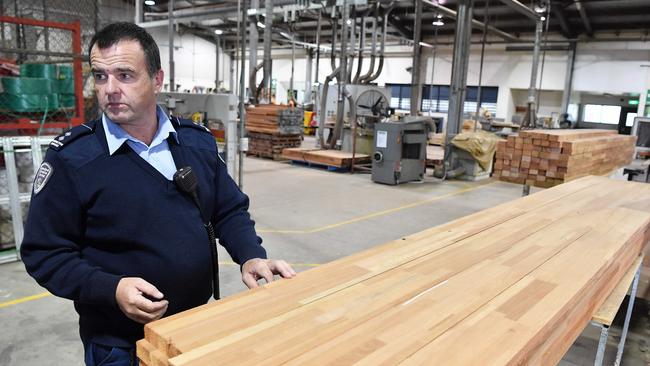
“It takes pressure off the home.”
Woodford is a high-security prison that is currently home to about 1500 prisoners and is at 150 per cent capacity, the Courier-Mail reported this week.
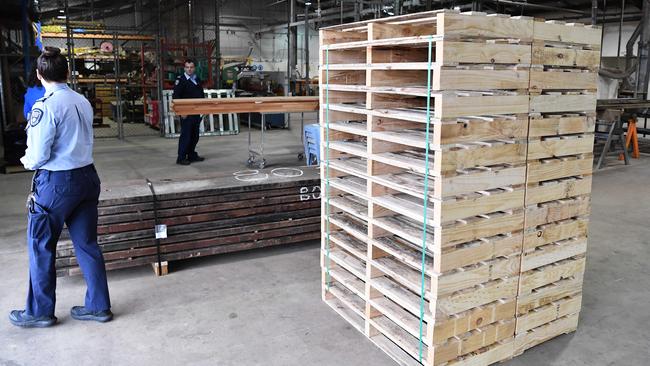
Back at the workshop, the prisoners are scanned by officers wielding metal detectors before they walk back to their cells.
Following them out becomes a carefully choreographed exercise of waiting at locked doors and gates.
One door will not open until a path is cleared of inmates.
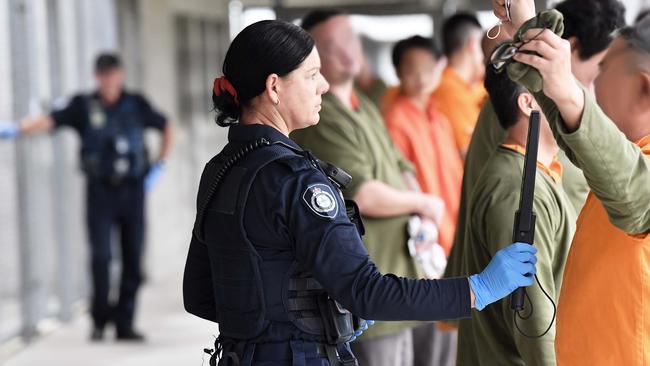
Another door opens straight away as yet more prisoners wait in a different section for their turn to be let through.
The prison’s general manager Stuart McHaffie, a Scottish native who worked in UK prisons in the 1990s before moving to Australia, said that it was like a European canal lock system where some boats are “locked” while other boats pass.
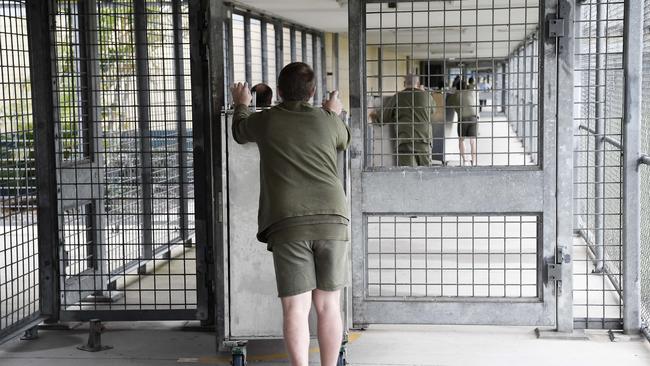
It is managed by staff in control rooms.
Visitors also have duress alarms attached to them upon entering and the guards have them too.
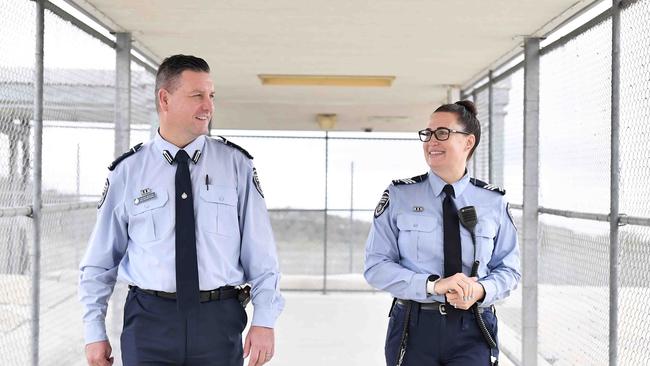
The duress alarm “pings” to small black boxes that line the roofs of the walkways that join the workshops to the other parts of the prison.
If the wearer was to fall suddenly to the ground, an alarm would sound.
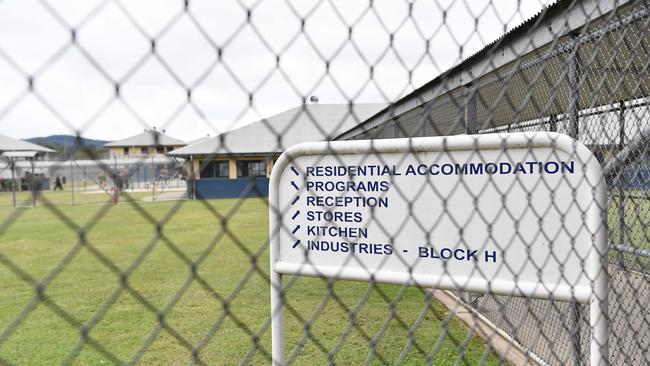
How prisoners live
Passing the maximum-security section, a series of heavy-looking doors and small windows gives little insight into the cells.
Mr McHaffie said Woodford maximum security had capacity for 20 prisoners and he described the cells as having more “hardened, if that is right word for it” infrastructure and no ligature points.
The chief superintendent said those cells were for prisoners who needed “a lot” of supervision and intervention.
“People who are at risk to others, potentially, or higher risk than most prisoners,” Mr McHaffie said.
He said there were also “protection prisoners” at Woodford, labelled as such because there were concerns for their safety because of the nature of their crimes, debt or “poor associations” with others.
The careful, choreographed movement along the walkways keeps the protected prisoners separate from the general inmate population, and they are housed in a different area.
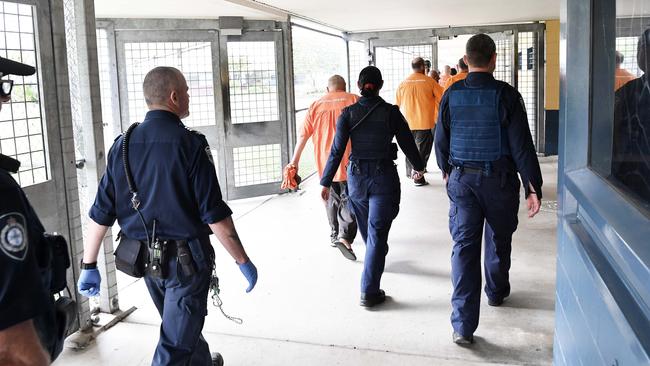
There is a section for prisoners who break the rules of the jail and one way of rewarding good behaviour is moving inmates to the “residential” section.
There, Mr McHaffie said the space was more like student accommodation with shared living areas and the window security had fewer bars and more “Crimsafe-like” security across openings.
“There’s a lot of scrutiny going into how you select prisoners to move into the residential area,” he said.
“The expectation is they’ve not been in trouble in the centre, no incidents, they’re working and they’re addressing their offending behaviour … and they remain drug-free while in that area.”
The centre also has an exercise yard and a football oval.
Mr McHaffie said exercise was a crucial part of the inmates’ routine.
Two high fences of razor wire surrounding the grounds are also visible from many parts of the prison.
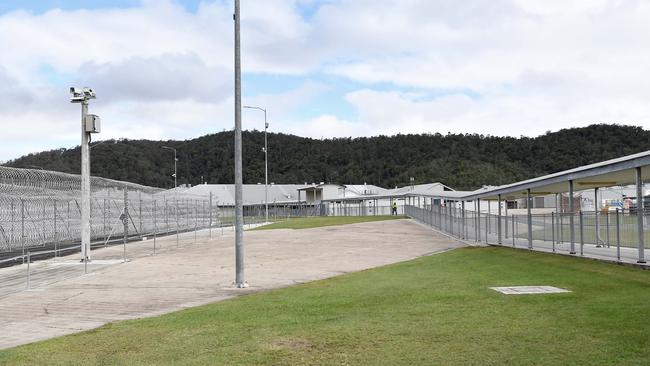
Officers and their lives
One of Mr McHaffie’s standout memories of an incident at Woodford was when the rain bomb of February and March 2022 hit southeast Queensland.
The flooding from the Stanley River cut off the jail for three days and he said many of his team chose to stay at the prison even when they had a chance to leave.
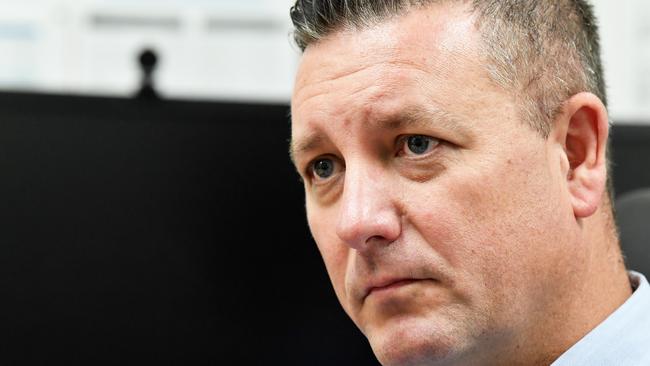
“It just reinforced for me the teamwork of the staff at Woodford,” he said.
The general manager described seeing prisoners being released and taking an SES tinny across swollen waterways to leave the prison.
Corrections officer Rivke, her name also withheld for privacy, was at the prison during the rain bomb incident.

For the acting supervisor, walking the wire mesh-enclosed paths reminds her of her mum who also worked in the centre for her whole career.
Rivke said she was happy to become an acting supervisor because it was something she talked about with her mum before she died.
“For me there’s a real sense of loyalty and pride to be able to follow that line and keep what my mum was passionate about,” she said.
Rivke said for her, the Woodford staff was like her family and she often socialised with other officers outside of work hours.
“It makes coming into this environment so much easier and more enjoyable,” she said.
Rivke also said the seven-day fortnight roster gave her amazing work-life balance.
For Mr McHaffie becoming the general manager of Woodford was the proudest moment of his career and he said he “loved” his work.
“If one person comes out of here a better person then we’ve done our job,” he said.
“Obviously I’d like to help more than one.”
Prisoner routines
Mornings are busy with prisoners woken up about 7am before breakfast is served, medication is dispensed and then their mornings may be filled with work, court hearings via videolink with the courthouse, undertaking education and training programs or visiting the on-site psychologist or medical staff along with legal visits.
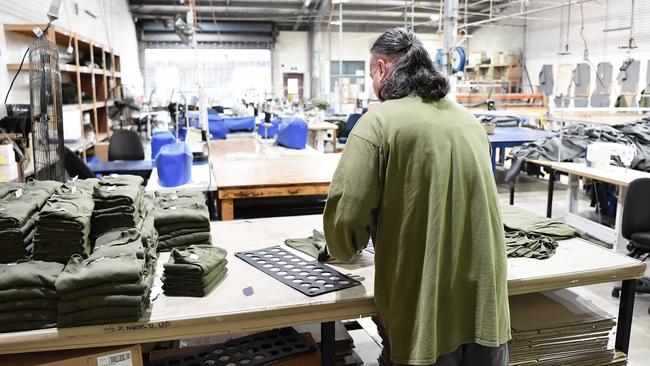
Courses include learning about domestic violence prevention.
Mr McHaffie said the afternoon schedule was a “mirror image” of the morning routine before the prisoners returned to their cells about 6pm.
Drug use and alcohol
Something as simple as the use of alcohol-based hand sanitiser during Covid-19 had to be carefully weighed up because of the allure it posed to some prisoners.
The general manager said the reality was drugs were still present in the prison population but a team of officers worked with families visiting inmates and an intelligence team also worked to address the issue.
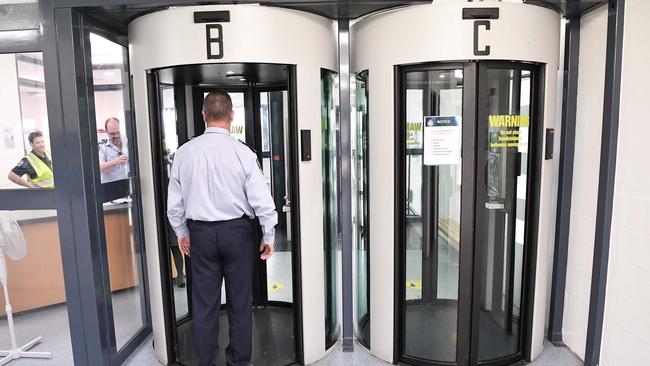
“It’s sad to say but prisons mirror the community,” Mr McHaffie said.
“So drugs will come into the centre, criminal organisations make money from that.”
He said the team that worked with visitors included sniffer dogs, scanning and the prison had a “close relationship” with the Queensland Police Service.
“We do support families as well,” he said.
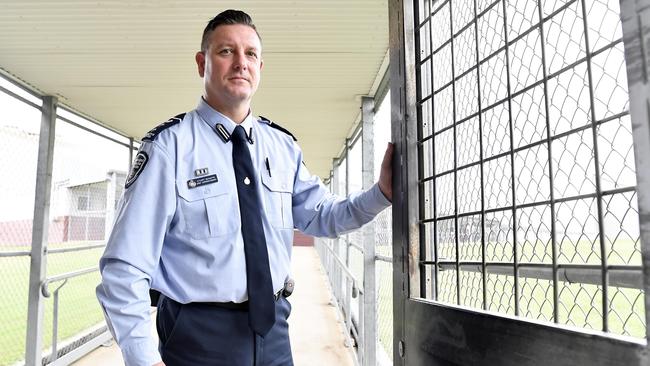
“It’s not uncommon for families from time to time to be stood over or encouraged strongly to bring substances in so we have different avenues that we can help them if that’s happening to them.”
He said medication treatment programs that stopped prisoners’ drug-seeking was having great outcomes for the prison and the community.
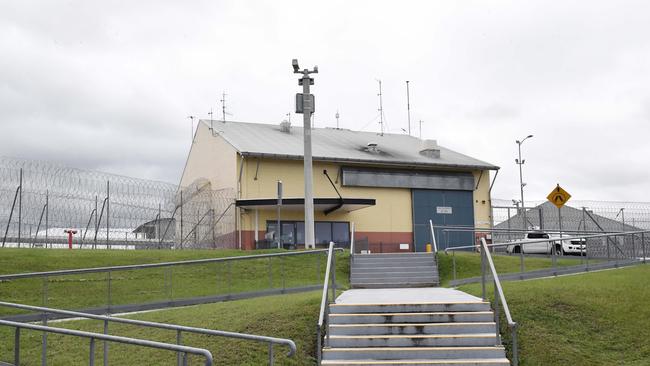
Hepatitis-C blitzes had also taken place in the centre for prisoners so they could learn more about their health and sports-based diversion therapy was also important.
“A lot of prisoners are here because of substance abuse or alcohol abuse and once they’re not using, you’re taking away the reason they came to jail,” Mr McHaffie said.
He said the use of drones to attempt to drug drop inside the grounds was not a big problem at Woodford because currently a drone operator needed “line of sight” to operate the drone successfully and that was hard to maintain at the complex.
Prison authorities stopped a drone carrying drugs from getting into the centre in July 2022.
High-profile prisoners
As of May 16, high-profile prisoners of the Woodford Correctional Centre included:
Lionel Patea
Lionel Patea was jailed for 30 years for murdering father-of-two Greg Dufty.
The incident occurred two months before he killed her former partner, Tara Brown, as she lay trapped in her car after being run off the road.
Phillip Graeme Abell
Phillip Graeme Abell was handed a life sentence in 2013 for the murder of Gold Coast policeman Damian Leeding in 2011.
Jason Nixon
Jason “Waxy” Nixon has spent only 18 weeks of his adult life out of prison.
His list of crimes includes the brutal and violent 1993 murder of equally violent inmate Bart Vosmaer and notorious 1997 prison break.
Other prisoners
The prison also, at one point in the past, housed ‘Postcard Bandit’ Brenden Abbott.
He has been described as Australia’s most notorious escapee.
Rick Thorburn, who was convicted of murdering his 12-year-old foster child Tiahleigh Palmer, was once also a prisoner at the centre.





